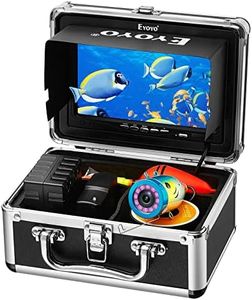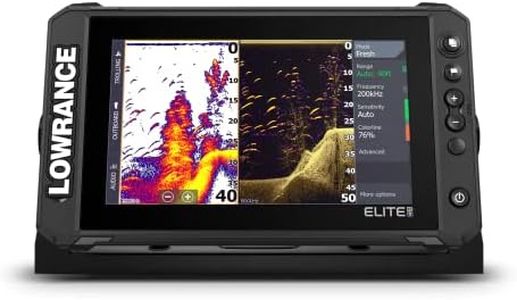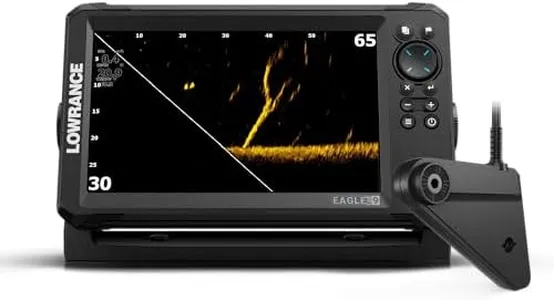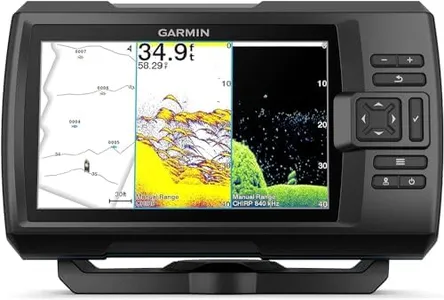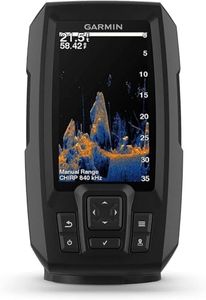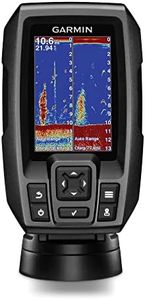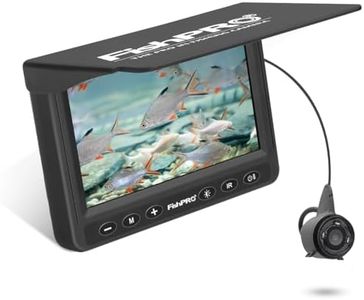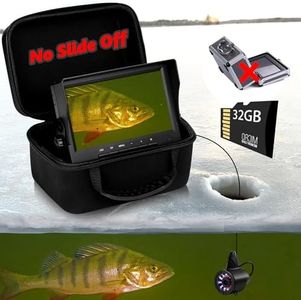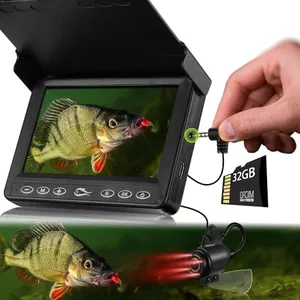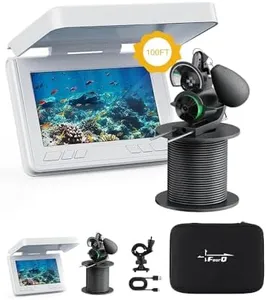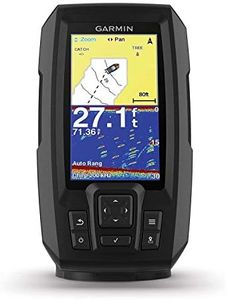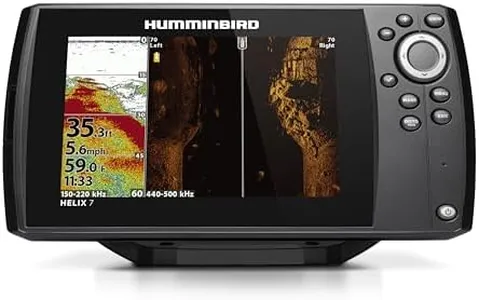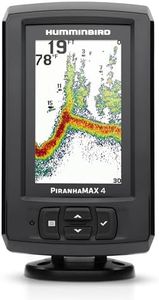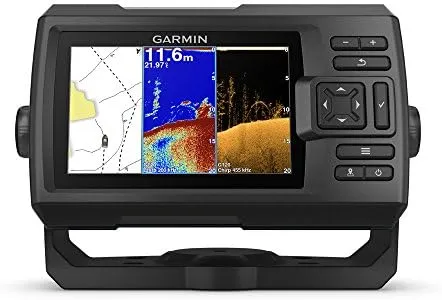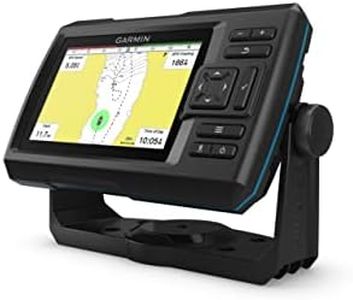10 Best Fish Finders for Kayak 2025 in the United States
Our technology thoroughly searches through the online shopping world, reviewing hundreds of sites. We then process and analyze this information, updating in real-time to bring you the latest top-rated products. This way, you always get the best and most current options available.

Our Top Picks
Winner
Lowrance Elite FS 9 Fish Finder with Active Imaging 3-in-1 Transducer, Preloaded C-MAP Contour+ Charts
Most important from
525 reviews
The Lowrance Elite FS 9 Fish Finder is equipped with several advanced features that make it a strong contender for kayak fishing. The standout feature is its 9-inch high-resolution, multi-touch LCD display, which is large enough to provide clear visuals while still being manageable on a kayak. The Active Imaging 3-in-1 sonar (CHIRP, SideScan, and DownScan) with FishReveal ensures you can see underwater structures and fish with refined detail, which is a crucial advantage for productive fishing trips. This model is also ActiveTarget ready, offering high-resolution images of fish in real-time, although this requires an additional purchase of the ActiveTarget Live Sonar system.
The preloaded C-MAP Contour+ charts are another significant benefit, providing detailed contours of over 8,900 U.S. lakes, which can help in navigating and locating fishing spots more accurately. On the connectivity side, the Elite FS 9 supports integrated wireless, NMEA 2000, and Ethernet, allowing for full networking capabilities. This means you can build a complete fishing system with additional components like Halo Dome Radar or share sonar and other data across multiple displays. The power source is a straightforward 12 Volt DC, which should be compatible with most kayak power setups.
Mounting is designed for surface mount, which may require some customization depending on your kayak's configuration. The package includes essential components such as the transducer, mounting bracket, and power cable. While the unit comes with a one-year warranty, which might be on the shorter side for some users, the price point and the need for potential additional purchases for full functionality (e.g., ActiveTarget Live Sonar) could be a downside for budget-conscious buyers. Nonetheless, the Lowrance Elite FS 9 offers a comprehensive and highly detailed fish-finding experience that could significantly benefit dedicated kayak anglers.
Most important from
525 reviews
Lowrance Eagle Eye™ 9 Live AMER, 9" IPS Screen, Eagle Eye™ transducer, C-MAP® Inland Charts for The US, with Coverage of Over 17,000+ American Lakes
Most important from
69 reviews
The Lowrance Eagle Eye 9 Live is a solid choice for kayak fishers looking for a detailed and versatile fish finder. It features a large 9-inch IPS screen that’s bright and easy to see from different angles, even if you wear polarized glasses—making it convenient on sunny days. The standout feature is its Eagle Eye transducer, which delivers four different sonar views without needing extra modules, including Live Forward and Down views plus CHIRP and DownScan imaging with FishReveal. This gives you a clear picture of fish and underwater structures in real time, which is very helpful when fishing from a kayak where space is limited.
It also comes with detailed C-MAP Inland charts covering over 17,000 US lakes, so you’ll have good GPS-based mapping to navigate your favorite spots. The device is battery-powered, which is practical for kayak use, but you’ll need to keep an eye on battery life during longer trips. Mounting is flexible with both panel and bracket options, plus a new twist-lock connector that makes installation quick and secure on small boats or kayaks.
The unit can be a bit bulky compared to smaller kayak-specific models, and with a weight of 2 pounds including accessories, it adds some heft to your gear. If you want a user-friendly fish finder with excellent sonar views and reliable maps for freshwater kayaking, the Lowrance Eagle Eye 9 Live is worth considering, though you should be prepared for its moderate size and managing battery power.
Most important from
69 reviews
Garmin Striker Vivid 7cv, U.S. with GT20-TM Transducer - Easy-to-Use 7-inch Color Fishfinder and Sonar Transducer, Vivid Scanning Sonar Color Palettes (010-02552-00)
Most important from
361 reviews
The Garmin Striker Vivid 7cv is a solid choice for kayak anglers looking for a reliable fishfinder with a clear and bright 7-inch color display. Its standout feature is the vivid scanning sonar with multiple color palettes, which helps you easily spot fish and underwater structures. The included GT20 transducer supports both traditional CHIRP sonar and ClearVü scanning, providing detailed views beneath your kayak. The built-in high-sensitivity GPS lets you mark fishing spots, create routes, and track your speed, which is helpful for navigation and returning to your best catches.
It also comes with Quickdraw Contours mapping, allowing you to create your own personalized maps on the water. Mounting is straightforward with the included tilt/swivel bracket that fits well on most kayaks. The device runs on battery power, which is typical for portable units like this. Additionally, Wi-Fi connectivity is a useful feature, enabling you to sync waypoints and receive updates via the ActiveCaptain app on your smartphone.
The unit weighs 4.4 pounds, which might feel a bit heavy for some small kayaks where weight matters. Also, the interface relies on buttons rather than a touchscreen, which some users might find less intuitive. While the surface mount is easy to install, it might not suit all kayak setups or preferences. For those seeking a dependable, easy-to-use fishfinder with good sonar clarity and helpful GPS features, this Garmin model is a strong fit, but users wanting a lighter or touchscreen device might consider other options.
